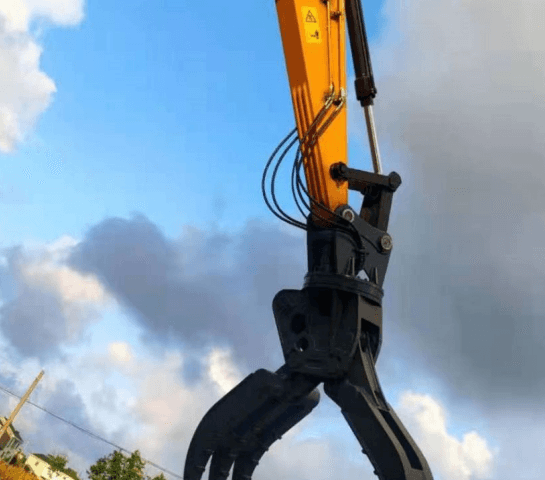
PESCO vehicle dismantler machine: load-free rotation principle and the golden rule of efficient operation
2025-04-10
A new era of efficient disassembly: How the Vehicle Dismantler Machine reshapes the automobile recycling industry
2025-04-29Ports and logistics centers are the core nodes of wood import and export, but traditional loading and unloading methods often face problems such as low efficiency, poor safety, and high cargo damage rate. PESCO hydraulic wood grabber is designed for port scenarios. Through modular structure and intelligent control technology, it provides a more efficient and safe operation solution for wood loading and unloading.
- Pain points of port wood loading and unloading
Inefficiency: Manual hanging rope lifting speed is slow and cannot meet the needs of rapid ship turnover.
Safety hazards: Slipping or falling of wood may damage goods and even threaten the safety of workers.
Poor adaptability: Frequent tool replacement for goods of different specifications such as logs and boards increases the complexity of operation.
Environmental challenges: Humid and salt spray environments accelerate equipment corrosion and affect service life. - Core functions of PESCO hydraulic wood grabber
Quickly adapt to a variety of equipment
Can be installed on port cranes, loaders or forklifts without additional equipment modification.
Hydraulic drive achieves fast switching to adapt to different wood loading and unloading tasks.
Efficient grabbing and stacking
Anti-slip grabber design, grab multiple logs or whole stacks of boards at a time, reducing the number of operations.
360° rotation function, accurately control the stacking direction of wood, and improve the utilization rate of container space.
Intelligent safety control
The pressure sensing system monitors the clamping force in real time to prevent wood from falling off.
Remote control reduces manual intervention and avoids the risk of high-altitude or close-range operations.
Durability and low maintenance
The use of corrosion-resistant steel and sealed structure adapts to the humid and salt spray environment of the port.
Modular design reduces maintenance costs, and key components can be replaced quickly.
III. Actual application scenarios
Bulk carrier log loading and unloading
Grab logs with a diameter of more than 50cm and directly complete the transfer from the deck to the yard or truck.
Precision container operation
The narrow arm design goes deep into the container to avoid scratching the box body and protect high-value boards.
Classification management of the yard
Stacking by wood type and specification, and cooperate with the port system to achieve intelligent scheduling. - Long-term benefits of port operations
Reduce costs: reduce labor demand and cargo damage compensation, and a single device can replace multiple people.
Improve efficiency: shorten ship detention time, enhance port throughput capacity and customer satisfaction.
Strengthen competitiveness: attract more international customers with efficient and safe operating standards.



